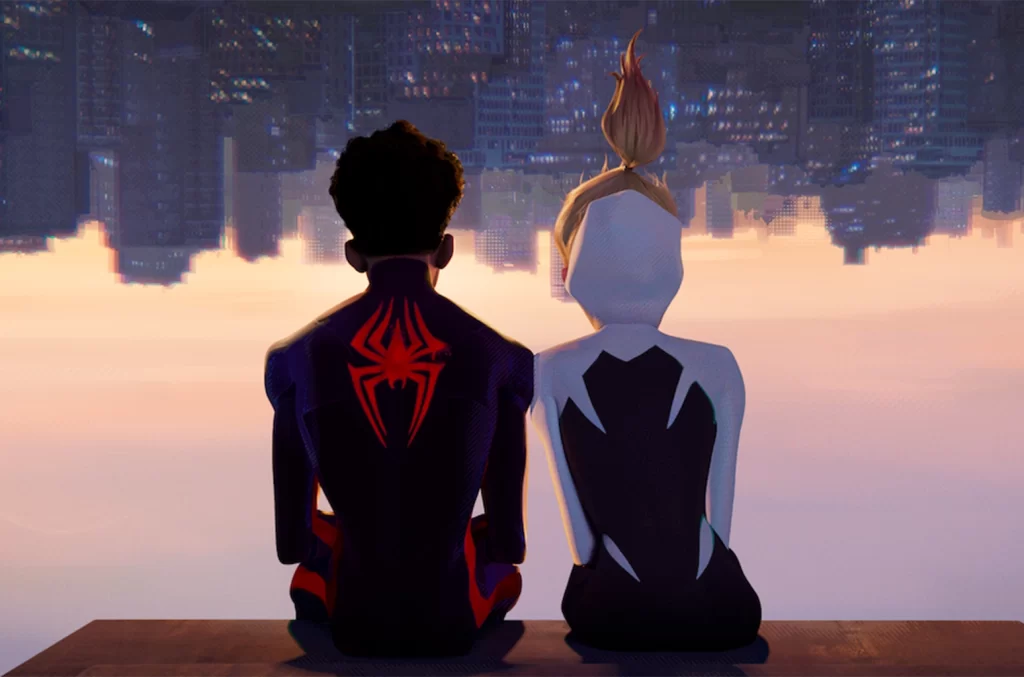
It’s cinematic law that sequels need to be bigger, which presents a daunting challenge for Spider-Man: Across the Spider-Verse. Its predecessor, the spry and snazzy Into the Spider-Verse, was awfully big to begin with, taking a familiar superhero origin story—this one centering on Miles Morales (Shameik Moore), an affable Brooklyn teenager who receives that famous radioactive insect bite—and then bombarding the screen with many more Spider-Men (well, actually Spider-People… OK, technically Spider-Animals) who arrived from different realms in the multiverse. It was a whole lot of movie, as noteworthy for its energetic style—busy, boisterous animation that evoked the splash panels of comic books without devolving into pastiche—as for its hectic, cluttered narrative. How could a follow-up one-up such vibrant maximalism?
Quite cleverly, as it turns out. Fueled by a powerful cocktail of joy and ambition, Across the Spider-Verse steers into the multiversal skid, embracing its own storytelling paradoxes with delirious abandon. It’s a dizzying and at times exhausting movie, and it doesn’t entirely evade the trap of saturation that foils many blockbusters; as the latter Avengers pictures proved, more superheroes doesn’t always equate to more fun. But the filmmakers here—the credited directors are Joaquim Dos Santos, Kemp Powers (from Soul), and Justin K. Thompson, while the screenwriters are Dave Callaham and the ubiquitous team of Phil Lord and Christopher Miller (makers of The LEGO Movie)—have located the sweet spot between playfulness and gravity. It isn’t that Across the Spider-Verse refuses to take itself seriously; it’s that it seriously commits to itself as a work of childlike invention and artistic imagination.
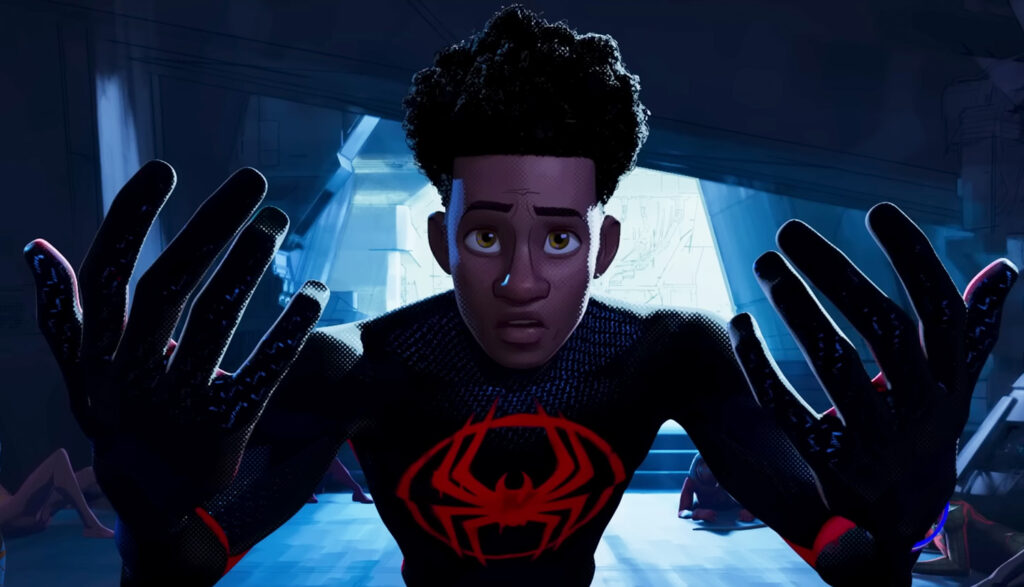
And also as a piece of visual cinema. I’ve seen arguments that the success of the Spider-Verse pictures demonstrates that all superhero flicks should be animated. I disfavor restrictive absolutes, and I hate to contemplate a universe that doesn’t include the flesh-and-blood feelings that Tobey Maguire and Kirsten Dunst brought to Sam Raimi’s superlative original trilogy. (You want an absolute? Spider-Man 2 is the best superhero movie ever made, and it always will be.) But animation creates possibility; it allows for displays of acrobatics and choreography that are simply infeasible in live-action filmmaking (well, unless you possess both James Cameron’s resources and his savvy). The directors here seize on this opportunity, delivering set pieces that soar with wonder yet which still unfold with a semblance of physical logic. The weightlessness problem that plagues most contemporary blockbusters remains—there is no real oomph to the many leaps and smacks and thwacks—but the impossible movements nonetheless carry kinetic momentum and flair.
Yet the true triumph here isn’t one of action, but of design. Across the Spider-Verse is a gorgeous movie, overflowing with exquisite images that evince a decisive artistic personality—an aesthetic soul that’s both flamboyant and fastidious. I’m not a comic-book reader, but I can still grasp how the animators have paid homage to their source medium—routinely spraying text on the screen, sneaking details into the frame’s margins (wait, is that vehicle named Peter Parkedcar?)—without becoming enslaved by it. They also recognize the value of color, applying a different scheme and texture to each world we visit (the watercolor opening is my personal favorite) while continually painting in bright, bold hues. (On the sonic side, Daniel Pemberton’s jubilant score harmonizes with the freewheeling animation.) There’s an early shot of two heroes hanging upside-down from the ledge of a skyscraper, the frame inverted so the New York City skyline is flipped on its horizontal axis, and it’s so quietly beautiful I nearly wept. In this era of generic special effects and banal green-screened locations (looking at you, MCU), it’s deeply gratifying to watch a superhero movie that pays such rigorous attention to what it looks like.
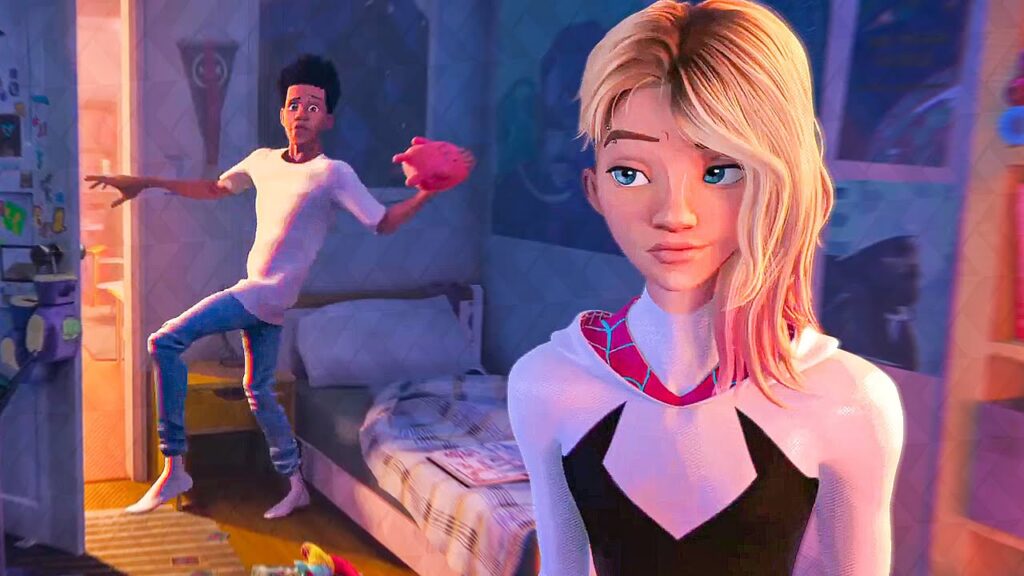
Those two heroes, by the way, are Miles and Gwen Stacy (Hailee Steinfeld), and their ambiguous relationship—not quite a romance, slightly more than a friendship—forms Across the Spider-Verse’s emotional backbone. It isn’t a pure love story, but it carries both a mutuality (Gwen herself is Spider-Woman) and an asymmetry (she keeps certain secrets from Miles and the audience) that help distinguish it from prior iterations of the boy-longs-for-girl framework.
Speaking of past constructions, the most recognizable subplot in Across the Spider-Verse involves Miles’ dilemma about whether to keep his superhero identity hidden, particularly from his parents (again voiced by Brian Tyree Henry and Luna Lauren Velez). It’s well-trodden territory—one of the few times the film feels secondhand. Fortunately, Miles has more pressing and interesting concerns. One is the arrival of The Spot (Jason Schwartzman), a bizarre “villain of the week” who looks like an ambulatory Rorschach test; his white body is dotted with black splotches that turn into negative space, resulting in strange portals that cause chaos. (The recent Dungeons & Dragons did something similar, though its gateways weren’t attached to a person.) I’m not convinced The Spot makes corporeal sense (even accepting his holey premise), but his weirdness is a welcome departure from the typical hulking antagonist.
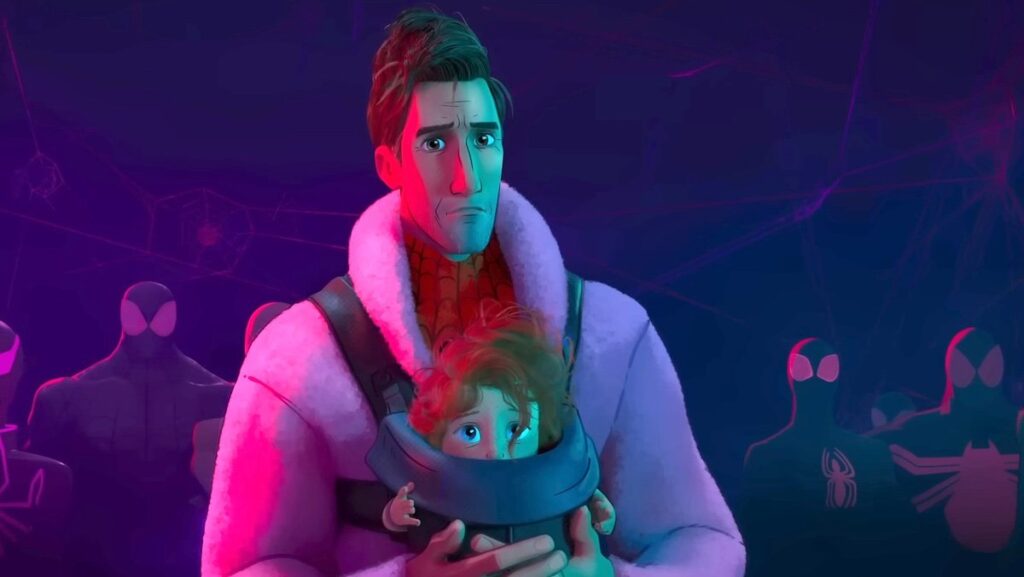
Miles’ other problem is, shall we say, more complex, involving a potpourri of standard science-fiction gibberish: overlapping universes, dimensional abnormalities, thwarted destinies, a sinister-sounding development called a canon event. The screenplay is crammed with ideas but isn’t wholly coherent; when Gwen confidently declares, “I’m not confused,” I’ll admit that made one of us. Yet what’s impressive about the script is how it toys with classic Spider-Man mythology without lapsing into either parodic shtick or referential tedium. It’s affectionate rather than mocking, and it exploits the genre’s conventions as yet another opportunity for innovation.
Every superhero movie has scenes of explanation, dutifully informing the audience about new people, new powers, new threats. But in Across the Spider-Verse, exposition turns into exhilaration. It’s hardly a spoiler to divulge that Miles’ latest adventure brings him into contact with additional variants of Spider-Man—my two favorites are Pavitr Prabhakar (Karan Soni), an Indian prancer who slings webs in the traffic-congested metropolis of “Mumbattan,” and Hobie Brown (Daniel Kaluuya), an anarchistic Briton who goes by the alias Spider-Punk—and their introductions are a rush of delightful montage and sly deviations. Whenever a new character announces “Let’s do this one more time,” it’s a cute commentary on the familiarity of origin stories that also presages a blizzard of clever images and sharp bursts of humor.
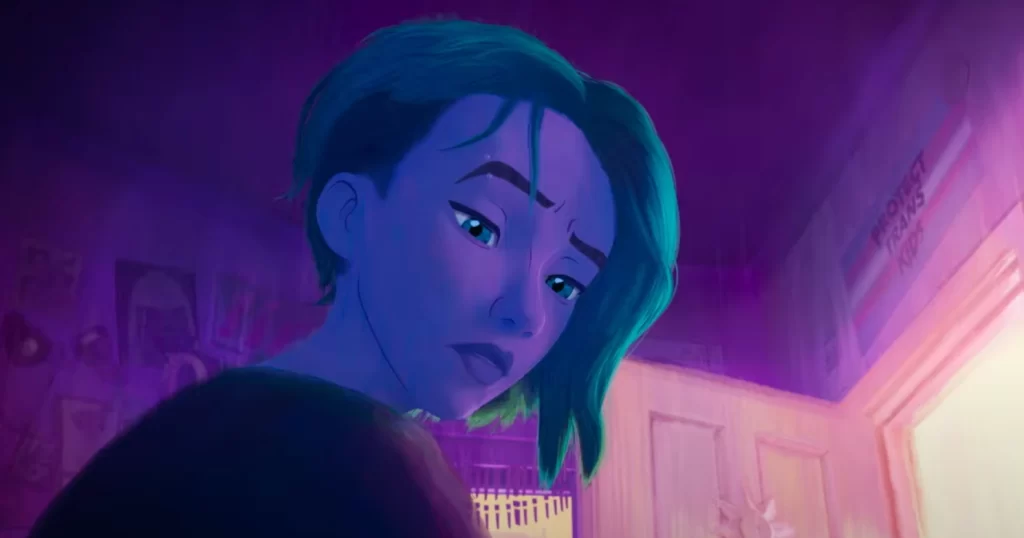
The jokes fly as fast as the webs in Across the Spider-Verse, with the filmmakers deploying a high-volume barrage of verbal quips (a villain called Typeface growls, “Go to Helvetica!”), slapstick pratfalls, and witty sight gags. (Praise the LEGO incarnation and its “beep-boop” dialect.) It’s pretty funny, though the movie’s comedy jostles uneasily alongside its weightier themes—the usual preoccupations of heroism and sacrifice, plus some high-concept babble about free will and predestination.
But messiness can be a feature as well as a bug, and Spider-Man: Across the Spider-Verse flaunts a narrative exuberance commensurate to its stylistic extravagance. In its closing scenes, which recall the thrilling finale of The Matrix Reloaded, it accomplishes a rare feat: It delivers a crescendoing climax that achieves independent power yet also leaves viewers craving more. So maybe Gwen Stacy spoke for me after all. I couldn’t possibly unravel all of this movie’s plotty complications, but when it comes to appreciating its bravura ingenuity, I am decidedly not confused.
Grade: B+
Jeremy Beck is the editor-in-chief of MovieManifesto. He watches more movies and television than he probably should.
